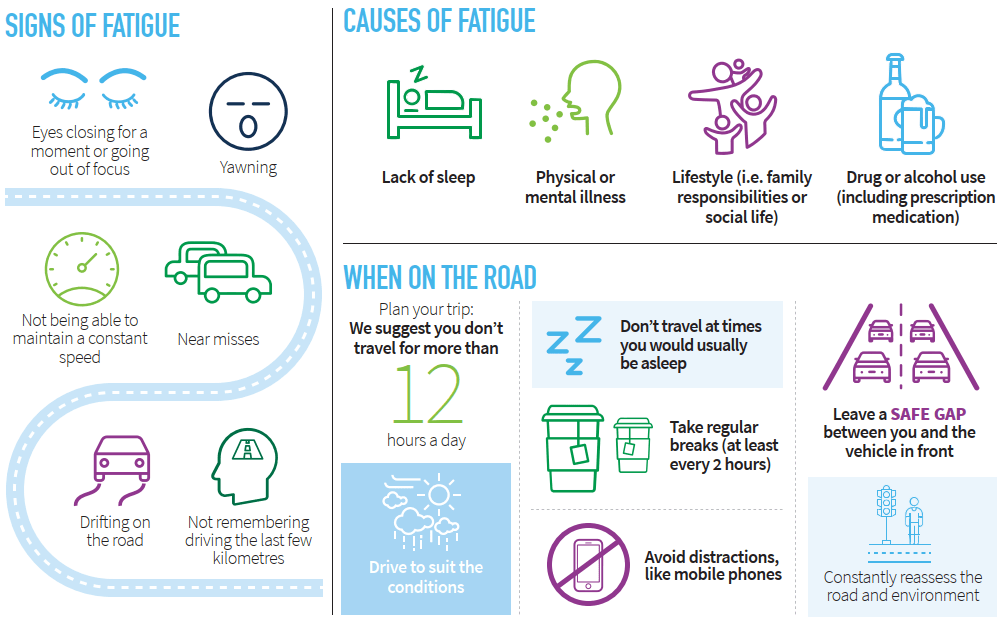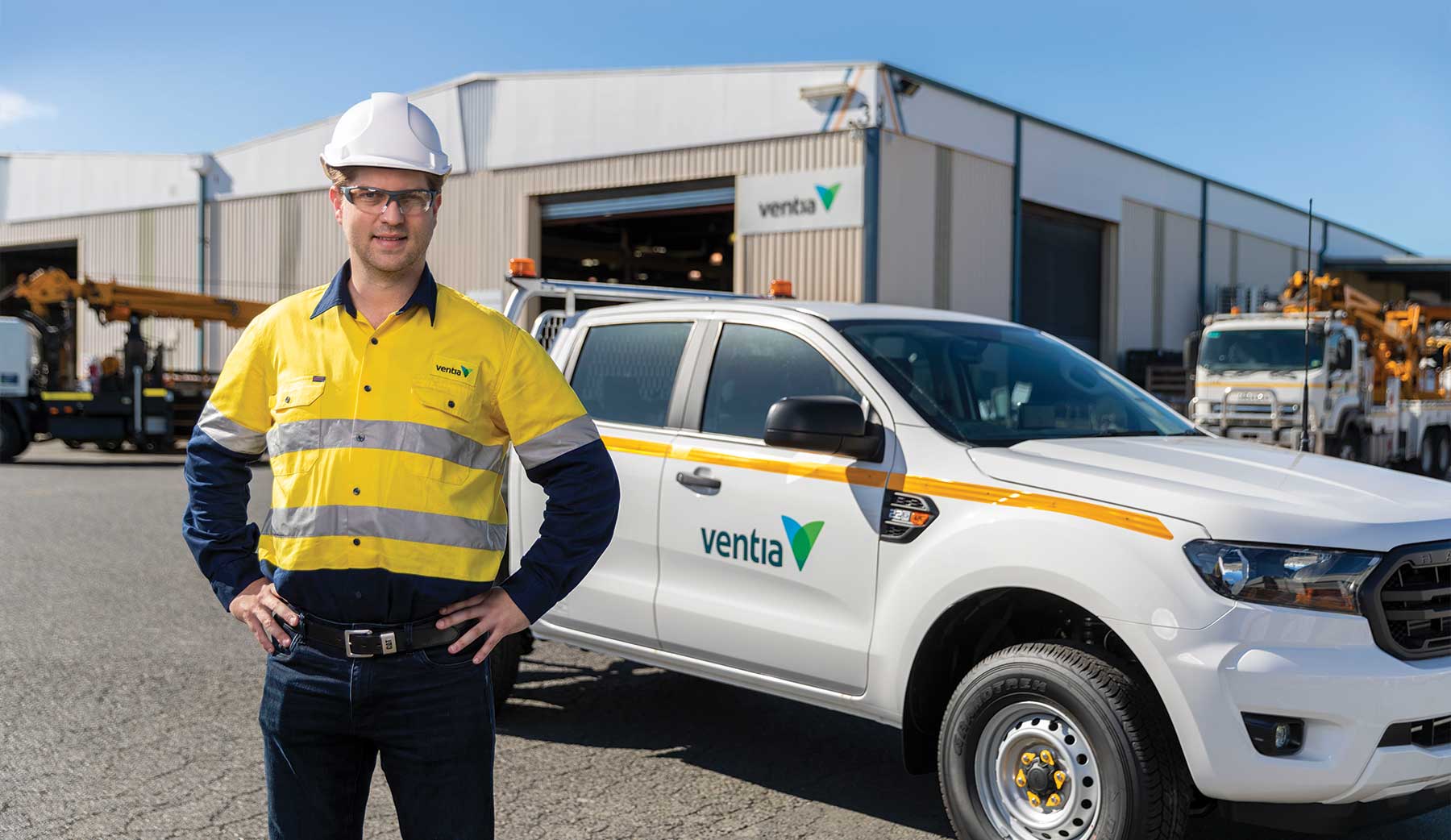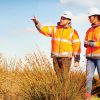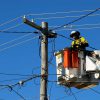Around half of our people drive as part of their job, clocking up an average of 40,000km per company vehicle, per year.
Driving is crucial to every part of our business. With road accidents the biggest cause of workplace deaths in Australia and New Zealand, we need to make sure safety is our first priority on the roads as it is everywhere else in our workplaces.
We have always been focused on ‘safer vehicles’ for our people – and that will continue in 2019 and beyond. We prioritise a range of important driver safety initiatives across Ventia, from technology to training and education.
IN THIS FEATURE, WE TAKE A LOOK AT:
- How we’re enhancing safety by investing in best-in-class vehicles, technology and improved reporting.
- Our focus on supporting our people with driver training.
- What you can do to manage driver distraction and fatigue – two of the leading causes of road accidents.
BEST-IN-CLASS FLEET
Led by Group Plant Manager Ryan Kirkwood, the Group Plant team is focused on safe, fit-for-purpose vehicles for everyone who takes the wheel across our business.
We’ve done an enormous amount of work to ensure our fleet has the right safety features on the road.
– Ryan Kirkwood
Ryan says, “This includes ensuring every Ventia vehicle carries the maximum five-star Australasian New Car Assessment Program (ANCAP) rating and standardising our fleet by selecting the Ford Ranger cab chassis as our vehicle of choice – renowned for its safety features.
“Simple changes, like making our vehicles as visible as possible with white paint and reflective yellow stripes, can make a big difference in reducing safety risks.
“Renewing our fleet of vehicles means we’re taking advantage of new technology and innovations.
“Our vehicles are now automatic, with cruise control, reverse sensors, cameras and – importantly – Bluetooth technology for controlling your phone, and the stereo using voice control,” said Ryan.
“These innovations help minimise driver distractions, like mobile phones, that can lead to safety risks.”

PARTNERING WITH FORD FOR SAFER ROADS
With vehicle technologies and safety standards changing we work closely with Ford Australia to ensure our vehicles continue to retain the highest possible safety rating of five stars.
Year-on-year the requirements to meet 5 Star ANCAP increases. For example, it is now necessary for a vehicle to have Autonomous Emergency Braking (AEB) in order to achieve a maximum 5 Star result.
AEB systems use sensors, radar, laser or cameras to detect potential collisions with other vehicles, pedestrians or other hazards.
Research shows that the introduction of AEB for driver and passenger safety is as significant as the introduction of compulsory seat belts in the 1970s. It isn’t yet a standard feature for commercial vehicles across our region, but as a direct result of our influence, all Ford commercial utes will have built-in AEB from next year: a win for Ventia and for the wider community.
SUPPORTING OUR PEOPLE
We often say that safety starts with us. That’s just as true on the roads as it is on site. Every one of our drivers is required to follow the road rules and take basic safety precautions.
This includes wearing seat belts, observing speed limits, ensuring cargo is secure and following pre-start check lists.
We recognise that the amount of driving we do, and the vehicles we operate at times, demand a higher level of competency than the average driver, so we’re rolling out a range of driver induction and training initiatives across the business.
“The focus of the training is about being aware of the risks you face on the road and avoiding potential incidents arising from external factors before they occur,” Ryan said.
“It will lead to more competent drivers, who are better able to deal with potentially unsafe situations and avoid incidents in the first place. As well as upgrading our In-Vehicle Monitoring System, we will be giving our people the tools they need to lead to a step change in driver awareness and behaviour.”
Additionally, in recognition of the significant amount of driving we do as a business and the associated risks, we will be introducing a 12th CRP which focuses on driving. You can expect to see a range of new initiatives linked to this new CRP over the coming months.
Stay tuned for more information on these two important initiatives.
Keep your eyes on the road, hands on the wheel, and your mind focused.
– Christian Frost, Executive General Manager, SHEQ

MINIMISING DISTRACTIONS
All our drivers must actively work to minimise and eliminate distractions to ensure their own safety as well as protect others from harm.
SO WHAT DOES THIS MEAN?
- Never text, email, or hold your phone while driving
- Secure all loose gear and possessions that could roll around inside the vehicle – store out of reach so you’re not tempted to retrieve while driving
- Don’t eat or drink whilst driving – keep focused on the road
- Don’t smoke in company vehicles
- Make adjustments to vehicle settings before you get underway including to the radio, air-conditioning, GPS or windows
- Keep your mind on driving – actively scan the road, use your mirrors and watch out for pedestrians and cyclists.

WAKEUP TO THE RISKS OF FATIGUE
One of the most dangerous risks we have to manage on the roads is fatigue. It’s a risk we need to be extremely vigilant about given our people often drive long distances and work in remote locations.
Fatigue can be deadly – did you know that 17 hours awake is equivalent to a blood alcohol content of 0.05?
– Source: NSW Centre for Road Safety
– Source: NSW Centre for Road Safety
If you experience signs of fatigue while driving, you should pull over immediately and take a break.

LOOK OUT FOR ONE ANOTHER
It isn’t always easy to tell your work mates that you have concerns about their fitness for work. It’s understandable to be worried about offending them but ask yourself – do you prioritise their safety and the safety of others on the road? If the answer is ‘yes’, speak up.








